- 4 zip-lock or freezer bags
- 36kg of sand … or beans, lentils - I used fresh kitty litter!
- Scales for weighing
- A medium sized bag/drawstring pouch
- A 40cm length of wooden dowel that is 25-35mm thick/diameter (my 30mm diameter dowel was sold as a 1.2 metre length by my local hardware store)
- A 2m length of rope or cord
- Rubber chair tips (not essential but just ensures no rough edges. Comes in a 4 pack and make sure you have purchased the ones appropriate for your dowel thickness)
- A Snap hook keyring (again, not essential)
- A Saw
- A Drill
[bs_col class="col-sm-4"]
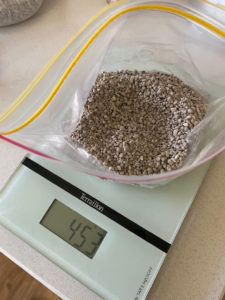 [/bs_col]
[/bs_col][bs_col class="col-sm-4"]
 [/bs_col]
[/bs_col][bs_col class="col-sm-4"]
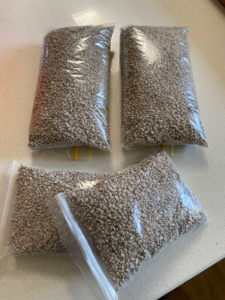 [/bs_col]
[/bs_col][/bs_row] Drill a hole in the middle of the 40cm length of dowel. Make sure the hole is wide enough that the rope can pass through it. (If you don’t have a drill, you could tie the rope to the centre of the dowel and tape it in place securely). Once the rope is through the hole, tie a secure knot at one end. Place a rubber chair tip at each end of the dowel. [bs_row class="row"]
[bs_col class="col-sm-4"]
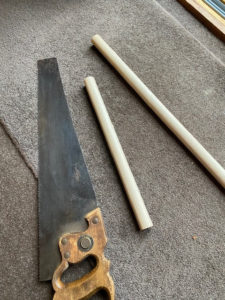 [/bs_col]
[/bs_col][bs_col class="col-sm-4"]
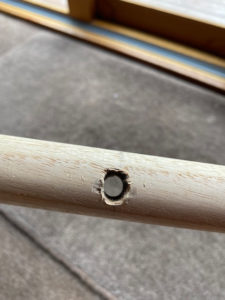 [/bs_col]
[/bs_col][bs_col class="col-sm-4"]
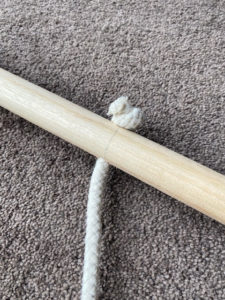 [/bs_col]
[/bs_col][/bs_row] At the other end of the rope, attach your snap hook keyring. Then, in your bag/drawstring pouch, place one of your bean bags - you might want to start off with a ½ pound one. Attach the drawstring bag to the snap hook. (You could tie your rope to the drawstring bag if no snap hook is available). You’re now good to go! [bs_row class="row"]
[bs_col class="col-sm-4"]
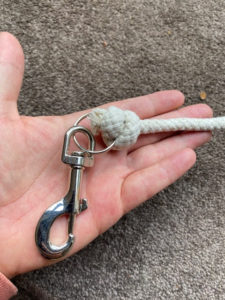 [/bs_col]
[/bs_col][bs_col class="col-sm-4"]
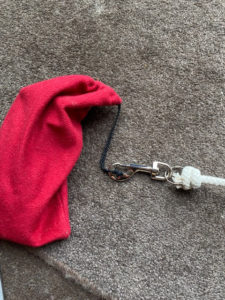 [/bs_col]
[/bs_col][bs_col class="col-sm-4"]
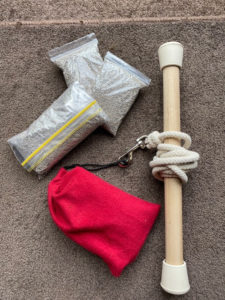 [/bs_col]
[/bs_col][/bs_row] Bonus If you have your left over 80cms of wooden dowel and two rubber chair tips, attach each tip to either end of the dowel: You’ve now got your own Roll Up bar/Gondola pole!
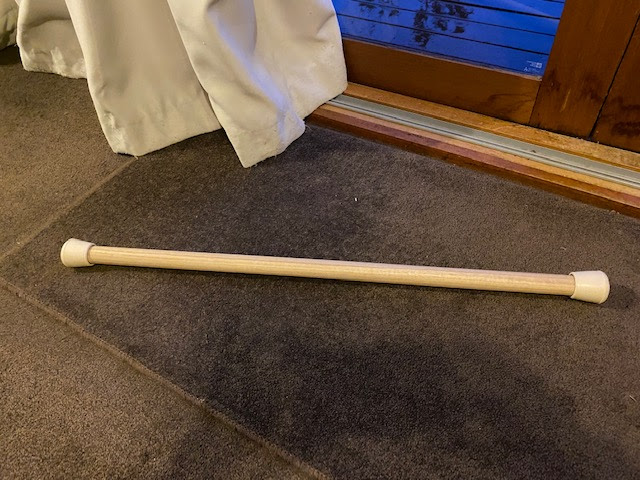 Once you've completed your Bean Bag device and bonus Roll Up Bar/Gondola pole, show them to your instructor at your next Virtually Infinity class and we can guide you through what to do next.
We can't wait to share this traditional work with you!
[post_title] => D.I.Y. Your Own piece of Historical Pilates Equipment!
[post_excerpt] =>
[post_status] => publish
[comment_status] => closed
[ping_status] => closed
[post_password] =>
[post_name] => d-i-y-your-own-piece-of-historical-pilates-equipment
[to_ping] =>
[pinged] =>
[post_modified] => 2021-10-07 17:53:27
[post_modified_gmt] => 2021-10-07 07:53:27
[post_content_filtered] =>
[post_parent] => 0
[guid] => https://www.infinitypilates.com/?p=4338
[menu_order] => 0
[post_type] => post
[post_mime_type] =>
[comment_count] => 0
[filter] => raw
)
[9] => WP_Post Object
(
[ID] => 992
[post_author] => 5
[post_date] => 2017-07-20 15:22:12
[post_date_gmt] => 2017-07-20 05:22:12
[post_content] => Our whole body experience is intertwined with how we move, how we relate to gravity, other people, space, breath, our curiosity and our desires. It is the body map of our whole system - physiological and psychological.
In our constant state of busyness, life whizzes by and we have to run faster every day to just keep up. Consumed and overwhelmed by this whirlwind of a modern lifestyle, we may fail to notice that we are losing control, awareness and all sense of well-being.
This is exactly how one of my clients described it: “I feel that I'm losing control and don’t have the time to be present in the moment.”
It is not uncommon to feel stuck, confused, disorientated and exhausted; yet losing mind/body awareness is a heavy price to pay. We don't want to end up feeling like something is missing in our lives, or not feeling whole, or overwhelmed.
To feel comfortable in our own skin, we need to pay attention to our bodily responses and to interactions we experience to live with more ease. When we practice the ability to respond to a feeling, sensation and will, life becomes less complicated.
The practice of minded movement teaches us how to develop the skills to reconnect with our body.
In Pilates, it starts with exploring feelings and sensations through dynamic motion. Understanding bones, muscles, fascia and how they interconnect with one another. It explores the dance between proprioception and interoception for emotional awareness: how your body is moving and how it feels while moving through space.
Through my work as a Pilates practitioner, I help clients find ways to create space in the body to shift energy, developing flow, balance and liveliness. When you make space, the body heals itself.
“Change happens with movement and movement heals.” Joseph Pilates.
When space is created it unwinds restrictions in the body. When restricted, the body is often numb from sensations, twisted, or sometimes so overly energized that it cannot move.
If we can create space, shift energy to overcome constrictions, we begin to recognise what it feels like to be whole and supported and can find the truth around us of what we feel.
It improves how we move and carry out our everyday tasks comfortably, efficiently, and with ease. It strengthens our relationships through better communication and noticing ourselves in space and time for a richer and more pleasant experience of life… to be comfortable in our own skin.
To experience the feeling of space and energy in your body join us on our upcoming workshop on the 6th Sense https://www.infinitypilates.com/news/workshop-live-a-fuller-life-through-your-sixth-sense/
[post_title] => To feel comfortable in our own skin
[post_excerpt] =>
[post_status] => publish
[comment_status] => closed
[ping_status] => open
[post_password] =>
[post_name] => feel-comfortable-skin
[to_ping] =>
[pinged] =>
[post_modified] => 2019-03-15 13:57:47
[post_modified_gmt] => 2019-03-15 03:57:47
[post_content_filtered] =>
[post_parent] => 0
[guid] => https://infinitypilat1.wpengine.com/?p=992
[menu_order] => 5
[post_type] => post
[post_mime_type] =>
[comment_count] => 0
[filter] => raw
)
)
[post_count] => 10
[current_post] => -1
[before_loop] => 1
[in_the_loop] =>
[post] => WP_Post Object
(
[ID] => 4545
[post_author] => 5
[post_date] => 2024-06-18 08:36:18
[post_date_gmt] => 2024-06-17 22:36:18
[post_content] => There has been a recent study by Stefano Cacciatore, MD (the corresponding author on the paper) with Universita Cattolica del Sacro Cuore, in Rome. The study was published online on May 2, 2024, in Journal of the American Geriatrics Society and explored the idea of physical performance being associated with long term survival in adults 80+ years. Physical performance was evaluated using Short Physical Performance Battery (SPPB) tests which included Balance tests; a 4-metre gait speed test and a chair-Stand test. ‘Long term survival’ was defined as reaching the age of 95.
We are very fortunate that the body of work we call ‘Pilates’ has within its repertoire many examples involving such challenges. So, let’s take a moment to look at some examples and how these not only integrate into your daily life, but can add to a longer life span!
Long Strides involving the speed and rhythm of walking gait
We’ve all seen it - and been guilty of it at times in our lives - of the ‘old person shuffle’: our feet slide along the floor as we step; the arches of our feet collapse and the length of our steps and the distance between each footprint becomes less and less. We slow down. We feel ‘heavy’.
Such an act requires less demand and less movement range from our hip sockets. We remain more folded in the front of our hip joints which shortens our hip flexing muscles and weakens our hip opening/extension muscles as we move through space. Our bodies are very clever: we get very good at what we practice and find ourselves physically doing most!
Hip Dissociation ”Chair Sit to Stand”
This is such a necessary part of our lives! Practically, we need to be able to get up and down of a chair, the couch or the toilet, therefore developing the strength and control to do such becomes vitally important! As this function decreases, we start to throw our body weight around to get up (running the risk of toppling over) or we land with a hard thud and we develop unconscious quirks and compensations throughout the body to do either action.
“Our muscles should obey our will” says Joseph Pilates and again, we find this action replicated in much of the work we do. We want to stand up strong and sit down soft.
It feels so amazing to find that power under our ‘seat’ to achieve the opening and closing of our hips! And often, as an instructor, our work is on emphasizing the great movement patterns and reducing the quirks and compensations. There are many examples of this action in the studio!
You will probably start noticing how you sit to stand or sit down again – Good!! We want to bring awareness to that as we can only change - and improve - what we become aware of.
Balance
This is a big issue! We are seeing more and more in the news and social media about ‘Falls Prevention’ and realising the importance of balance in our day to day lives. We try to make light about it regarding aging: You know you’re getting older when you don’t “lose your balance” but you had a “fall”!
Pilates brings balance to our various muscle groups, which in turn, brings improvements to the act of balancing. Let’s take this simple act: Stand on one leg for as long as you can. Notice where you start to feel a sense of work on the outside of your hips. Try the other leg – can you stand for longer on that side? Do you wobble more?
Whilst there is a lot more to ‘balance’ the exercise– Wall Glutes – are a great way to start. They target directly the muscles you would have felt activating as you stood with one leg off the floor. You could also try standing on one leg while you brush your teeth or wash the dishes. Again, we get better at what we practice.
But most importantly regarding balance – and in fact with ALL the exercises – is the importance of Breath. Effective and improved breathing improves our balance as we access all the lobes within our lungs rather than just a bit of each of them. When we hold our breath, we set up bracing and ‘locking’ patterns which makes us less responsive and adaptable to forces both from outside and within our bodies. Pilates has this integral factor and development at its’ foundation and the awareness of Breath is integrated from the first session.
Paul Schembri
[post_title] => Pilates: The Anti-Aging Secret
[post_excerpt] =>
[post_status] => publish
[comment_status] => closed
[ping_status] => closed
[post_password] =>
[post_name] => pilates-the-anti-aging-secret
[to_ping] =>
[pinged] =>
[post_modified] => 2024-06-19 14:47:02
[post_modified_gmt] => 2024-06-19 04:47:02
[post_content_filtered] =>
[post_parent] => 0
[guid] => https://www.infinitypilates.com/?p=4545
[menu_order] => 0
[post_type] => post
[post_mime_type] =>
[comment_count] => 0
[filter] => raw
)
[comment_count] => 0
[current_comment] => -1
[found_posts] => 18
[max_num_pages] => 2
[max_num_comment_pages] => 0
[is_single] =>
[is_preview] =>
[is_page] =>
[is_archive] => 1
[is_date] =>
[is_year] =>
[is_month] =>
[is_day] =>
[is_time] =>
[is_author] =>
[is_category] => 1
[is_tag] =>
[is_tax] =>
[is_search] =>
[is_feed] =>
[is_comment_feed] =>
[is_trackback] =>
[is_home] =>
[is_privacy_policy] =>
[is_404] =>
[is_embed] =>
[is_paged] =>
[is_admin] =>
[is_attachment] =>
[is_singular] =>
[is_robots] =>
[is_favicon] =>
[is_posts_page] =>
[is_post_type_archive] =>
[query_vars_hash:WP_Query:private] => cc22aa1853072512559229bede15f605
[query_vars_changed:WP_Query:private] => 1
[thumbnails_cached] =>
[allow_query_attachment_by_filename:protected] =>
[stopwords:WP_Query:private] =>
[compat_fields:WP_Query:private] => Array
(
[0] => query_vars_hash
[1] => query_vars_changed
)
[compat_methods:WP_Query:private] => Array
(
[0] => init_query_flags
[1] => parse_tax_query
)
)
Once you've completed your Bean Bag device and bonus Roll Up Bar/Gondola pole, show them to your instructor at your next Virtually Infinity class and we can guide you through what to do next.
We can't wait to share this traditional work with you!
[post_title] => D.I.Y. Your Own piece of Historical Pilates Equipment!
[post_excerpt] =>
[post_status] => publish
[comment_status] => closed
[ping_status] => closed
[post_password] =>
[post_name] => d-i-y-your-own-piece-of-historical-pilates-equipment
[to_ping] =>
[pinged] =>
[post_modified] => 2021-10-07 17:53:27
[post_modified_gmt] => 2021-10-07 07:53:27
[post_content_filtered] =>
[post_parent] => 0
[guid] => https://www.infinitypilates.com/?p=4338
[menu_order] => 0
[post_type] => post
[post_mime_type] =>
[comment_count] => 0
[filter] => raw
)
[9] => WP_Post Object
(
[ID] => 992
[post_author] => 5
[post_date] => 2017-07-20 15:22:12
[post_date_gmt] => 2017-07-20 05:22:12
[post_content] => Our whole body experience is intertwined with how we move, how we relate to gravity, other people, space, breath, our curiosity and our desires. It is the body map of our whole system - physiological and psychological.
In our constant state of busyness, life whizzes by and we have to run faster every day to just keep up. Consumed and overwhelmed by this whirlwind of a modern lifestyle, we may fail to notice that we are losing control, awareness and all sense of well-being.
This is exactly how one of my clients described it: “I feel that I'm losing control and don’t have the time to be present in the moment.”
It is not uncommon to feel stuck, confused, disorientated and exhausted; yet losing mind/body awareness is a heavy price to pay. We don't want to end up feeling like something is missing in our lives, or not feeling whole, or overwhelmed.
To feel comfortable in our own skin, we need to pay attention to our bodily responses and to interactions we experience to live with more ease. When we practice the ability to respond to a feeling, sensation and will, life becomes less complicated.
The practice of minded movement teaches us how to develop the skills to reconnect with our body.
In Pilates, it starts with exploring feelings and sensations through dynamic motion. Understanding bones, muscles, fascia and how they interconnect with one another. It explores the dance between proprioception and interoception for emotional awareness: how your body is moving and how it feels while moving through space.
Through my work as a Pilates practitioner, I help clients find ways to create space in the body to shift energy, developing flow, balance and liveliness. When you make space, the body heals itself.
“Change happens with movement and movement heals.” Joseph Pilates.
When space is created it unwinds restrictions in the body. When restricted, the body is often numb from sensations, twisted, or sometimes so overly energized that it cannot move.
If we can create space, shift energy to overcome constrictions, we begin to recognise what it feels like to be whole and supported and can find the truth around us of what we feel.
It improves how we move and carry out our everyday tasks comfortably, efficiently, and with ease. It strengthens our relationships through better communication and noticing ourselves in space and time for a richer and more pleasant experience of life… to be comfortable in our own skin.
To experience the feeling of space and energy in your body join us on our upcoming workshop on the 6th Sense https://www.infinitypilates.com/news/workshop-live-a-fuller-life-through-your-sixth-sense/
[post_title] => To feel comfortable in our own skin
[post_excerpt] =>
[post_status] => publish
[comment_status] => closed
[ping_status] => open
[post_password] =>
[post_name] => feel-comfortable-skin
[to_ping] =>
[pinged] =>
[post_modified] => 2019-03-15 13:57:47
[post_modified_gmt] => 2019-03-15 03:57:47
[post_content_filtered] =>
[post_parent] => 0
[guid] => https://infinitypilat1.wpengine.com/?p=992
[menu_order] => 5
[post_type] => post
[post_mime_type] =>
[comment_count] => 0
[filter] => raw
)
)
[post_count] => 10
[current_post] => -1
[before_loop] => 1
[in_the_loop] =>
[post] => WP_Post Object
(
[ID] => 4545
[post_author] => 5
[post_date] => 2024-06-18 08:36:18
[post_date_gmt] => 2024-06-17 22:36:18
[post_content] => There has been a recent study by Stefano Cacciatore, MD (the corresponding author on the paper) with Universita Cattolica del Sacro Cuore, in Rome. The study was published online on May 2, 2024, in Journal of the American Geriatrics Society and explored the idea of physical performance being associated with long term survival in adults 80+ years. Physical performance was evaluated using Short Physical Performance Battery (SPPB) tests which included Balance tests; a 4-metre gait speed test and a chair-Stand test. ‘Long term survival’ was defined as reaching the age of 95.
We are very fortunate that the body of work we call ‘Pilates’ has within its repertoire many examples involving such challenges. So, let’s take a moment to look at some examples and how these not only integrate into your daily life, but can add to a longer life span!
Long Strides involving the speed and rhythm of walking gait
We’ve all seen it - and been guilty of it at times in our lives - of the ‘old person shuffle’: our feet slide along the floor as we step; the arches of our feet collapse and the length of our steps and the distance between each footprint becomes less and less. We slow down. We feel ‘heavy’.
Such an act requires less demand and less movement range from our hip sockets. We remain more folded in the front of our hip joints which shortens our hip flexing muscles and weakens our hip opening/extension muscles as we move through space. Our bodies are very clever: we get very good at what we practice and find ourselves physically doing most!
Hip Dissociation ”Chair Sit to Stand”
This is such a necessary part of our lives! Practically, we need to be able to get up and down of a chair, the couch or the toilet, therefore developing the strength and control to do such becomes vitally important! As this function decreases, we start to throw our body weight around to get up (running the risk of toppling over) or we land with a hard thud and we develop unconscious quirks and compensations throughout the body to do either action.
“Our muscles should obey our will” says Joseph Pilates and again, we find this action replicated in much of the work we do. We want to stand up strong and sit down soft.
It feels so amazing to find that power under our ‘seat’ to achieve the opening and closing of our hips! And often, as an instructor, our work is on emphasizing the great movement patterns and reducing the quirks and compensations. There are many examples of this action in the studio!
You will probably start noticing how you sit to stand or sit down again – Good!! We want to bring awareness to that as we can only change - and improve - what we become aware of.
Balance
This is a big issue! We are seeing more and more in the news and social media about ‘Falls Prevention’ and realising the importance of balance in our day to day lives. We try to make light about it regarding aging: You know you’re getting older when you don’t “lose your balance” but you had a “fall”!
Pilates brings balance to our various muscle groups, which in turn, brings improvements to the act of balancing. Let’s take this simple act: Stand on one leg for as long as you can. Notice where you start to feel a sense of work on the outside of your hips. Try the other leg – can you stand for longer on that side? Do you wobble more?
Whilst there is a lot more to ‘balance’ the exercise– Wall Glutes – are a great way to start. They target directly the muscles you would have felt activating as you stood with one leg off the floor. You could also try standing on one leg while you brush your teeth or wash the dishes. Again, we get better at what we practice.
But most importantly regarding balance – and in fact with ALL the exercises – is the importance of Breath. Effective and improved breathing improves our balance as we access all the lobes within our lungs rather than just a bit of each of them. When we hold our breath, we set up bracing and ‘locking’ patterns which makes us less responsive and adaptable to forces both from outside and within our bodies. Pilates has this integral factor and development at its’ foundation and the awareness of Breath is integrated from the first session.
Paul Schembri
[post_title] => Pilates: The Anti-Aging Secret
[post_excerpt] =>
[post_status] => publish
[comment_status] => closed
[ping_status] => closed
[post_password] =>
[post_name] => pilates-the-anti-aging-secret
[to_ping] =>
[pinged] =>
[post_modified] => 2024-06-19 14:47:02
[post_modified_gmt] => 2024-06-19 04:47:02
[post_content_filtered] =>
[post_parent] => 0
[guid] => https://www.infinitypilates.com/?p=4545
[menu_order] => 0
[post_type] => post
[post_mime_type] =>
[comment_count] => 0
[filter] => raw
)
[comment_count] => 0
[current_comment] => -1
[found_posts] => 18
[max_num_pages] => 2
[max_num_comment_pages] => 0
[is_single] =>
[is_preview] =>
[is_page] =>
[is_archive] => 1
[is_date] =>
[is_year] =>
[is_month] =>
[is_day] =>
[is_time] =>
[is_author] =>
[is_category] => 1
[is_tag] =>
[is_tax] =>
[is_search] =>
[is_feed] =>
[is_comment_feed] =>
[is_trackback] =>
[is_home] =>
[is_privacy_policy] =>
[is_404] =>
[is_embed] =>
[is_paged] =>
[is_admin] =>
[is_attachment] =>
[is_singular] =>
[is_robots] =>
[is_favicon] =>
[is_posts_page] =>
[is_post_type_archive] =>
[query_vars_hash:WP_Query:private] => cc22aa1853072512559229bede15f605
[query_vars_changed:WP_Query:private] => 1
[thumbnails_cached] =>
[allow_query_attachment_by_filename:protected] =>
[stopwords:WP_Query:private] =>
[compat_fields:WP_Query:private] => Array
(
[0] => query_vars_hash
[1] => query_vars_changed
)
[compat_methods:WP_Query:private] => Array
(
[0] => init_query_flags
[1] => parse_tax_query
)
)
Pilates: The Anti-Aging Secret
18-06-2024
There has been a recent study by Stefano Cacciatore, MD (the corresponding author on the ...
WALK TALL
23-11-2023
You’ve probably heard the phrase “sitting is the new smoking”. And whilst the ...
The Pilates Alliance of Australasia (PAA) 2023 Conference
02-10-2023
Very early in my Pilates career and developement over the past 33 years, I kept hearing ...
PILATES FOR ENDURANCE AND FUNCTIONAL STRENGTH
29-08-2023
When people think about muscles, they usually think about muscular strength. From a ...
Get down those stairs
09-03-2023
We are all familiar with the proven benefits of Pilates whether it’s by our own ...
21st century “tech postures” and sedentary lifestyles decrease pelvic floor function.
25-01-2023
As we come out of a slew of lockdowns and increased working from home, we spend more time ...
A word from our new team member Nicola Kuiper
05-10-2022
I grew up in a busy house as the youngest of three. My sister and brother both trained in ...
Men, Pilates and the Art of Transformational Change
16-06-2022
Men, Pilates and the Art of Transformational Change by Paul Schembri. When I first ...
March MATness 2022
04-04-2022
This year, I decided to join the worldwide phenomenon of #marchmatness, originally started...
Summer Rooftop Pilates + Bubbles Series
30-11-2021
Join Kerrie and team for 45 mins open Pilates mat class followed by a 15 mins ...
Our Infinity Pilates Gift Vouchers
30-11-2021
Give the gift of Pilates to those close to you opening the world of Pilates to your ...
D.I.Y. Your Own piece of Historical Pilates Equipment!
07-10-2021
After feeling inspired by a recent Pilates Alliance conference workshop attended by ...
Infinity Pilates temporary shutdown- Federal government community restrictions
24-03-2020
Dear clients and friends of Infinity Pilates, These are unprecedented times that we all...
Pilates helps build self-esteem in the teen years
13-01-2020
Pilates helps build self-esteem in the teen years Young people aged 12 to 17 years go ...
Pilates for Scoliosis
13-01-2020
The spine plays a very important role in our body. Whist supporting the head and trunk, it...
Begin your Pilates Journey with Infinity Teens and Begin a Movement for Life
25-11-2019
Infinity Teens Workshop Join Laura Bennetto for a fun afternoon of Pilates on the mat and...
November, Summertime & Thoughtful Gift Ideas
28-11-2019
Summer's Coming! Longer days, warmer temperatures and much socializing and spending time ...
Jean Hailes Women’s Health Week 4-8th September 2017
20-08-2017
When it comes to health, many women are great at caring for others but often put ...
To feel comfortable in our own skin
20-07-2017
Our whole body experience is intertwined with how we move, how we relate to gravity, ...
Variety is the spice of life
07-08-2017
“I’m not sure I can do this” / “I’m too old to move that way again”… How ...
We are all aware of the 5 senses of the body, but about our 6th SENSE?
12-07-2017
Smell, Sight, Hearing, Touch, Taste… what’s missing here? Kinaesthesia. As skin is ...
Workshop – Live a fuller life through your Sixth Sense.
02-07-2017
Lack of sensibility to movement in all its forms robs most people of a fulfilled life. ...
How well do you know your bones?
02-07-2017
Osteoporosis Australia and Garvin Institute of Medical Research has recently launched ...
Pelvic Power for men
16-08-2016
Pelvic Power for men. Encouraging the male community to start the dialogue about Men’s ...
BioTensegrity Anatomy for the 21st Century
19-06-2016
BioTensegrity Anatomy for the 21st Century Presented by John Sharkey BSc NIMT MSc from ...
Men, Pilates and the male pelvic floor
16-08-2016
Men, Pilates and the Pelvic Floor This article will focus on the male pelvic floor and ...
Blossom Leilani Crawford Pilates Workshop Sydney 2015
16-09-2015
Blossom Leilani Crawford Pilates workshop It was wonderful to see Blossom back in ...
Infinity Pilates raises funds for Jean Hailes Foundation
08-09-2015
Infinity Pilates BUFF BONES® class take # 2. It was wonderful to run the Pilates mat ...
Jean Hailes Women’s Health Week at Infinity
17-08-2015
Pilates for BUFF BONES® and Jean Hailes’ Women’s Health Week 2015 The BUFF BONES®...
Action packed BUFF BONES® class at Infinity
17-08-2015
On Monday 3rd August, Infinity Pilates Studio presented its BUFF BONES® Pilates Mat ...
Healthy Bones Action Week 2015 – Infinity Pilates
26-05-2015
Celebrate Healthy Bones Action Week 2015 with Infinity Pilates Buff Bones® Class and ...
Paul Schembri’s Wunda Chair experience
12-05-2015
As an instructor of the Pilates Method – and as a member of the Pilates Alliance ...
Buff Bones© training with Rebekah Rotstein
12-05-2015
I have just returned from an inspirational time in Sydney training with Rebekah Rotstein ...
Hormonal harmony with Pilates and nutrition
28-10-2014
Join us here at Infinity Pilates for an exciting workshop. Help bring back balance to ...
Pelvic Power matwork class
24-09-2014
A big thank you to all the women who took part in the fund raising event for Jean Hailes ...
Womens health week 1st -5th September 2014
10-08-2014
Wake up the pelvis, increasing power and support in the body and be ready to move with ...
PILATES MATWORK CLASSES WINTER SERIES
29-07-2014
MAT WORK CLASSES at Infinity Pilates Studio with Paul Schembri . Deepen your practice, ...
International Pilates Day 2014
20-05-2014
Saturday 3rd May was International Pilates Day. It celebrate, Infinity Pilates ...
International Pilates Day 2014
15-04-2014
As part of our celebrations for International Pilates Day 2014 , Infinity Pilates ...
Fascia and Pilates
16-02-2014
Come inside and explore the wide matrix of the fascial web and its relationship with ...
Pilates and osteoporosis
21-01-2014
PILATES AND OSTEOPOROSIS One of the most potentially devastating conditions that can ...
Reflections on Infinity’s 10 Years
10-12-2013
I am so very proud of how far Infinity Pilates Studio has come in the first 10 years of ...
10th Anniversary Message from Kerrie Murphy
05-12-2013
Dear Friends, Thank you all for your warm wishes on our 10 Year Anniversary here at ...
Infinity Pilates Celebrates 10 years! Come to the Open Day
22-09-2013
Infinity Pilates Studio is delighted to celebrate its 10th Anniversary on Saturday, 12th...
Pilates and Hypertension
19-09-2013
‘Hypertension’ (or high blood pressure) is becoming a familiar condition that presents...
Pilates and the Pelvic Floor
19-09-2013
Throughout a Pilates session, a client will invariably hear the cue to “pull up” or ...
Spring is a perfect time to go outside and enjoy the sunshine
19-09-2013
Spring is a perfect time to go outside and enjoy the sunshine, breath in the fresh air and...
Memories of Julian Littleford
19-09-2013
When I was asked to write a summary of my experiences after working with Julian ...

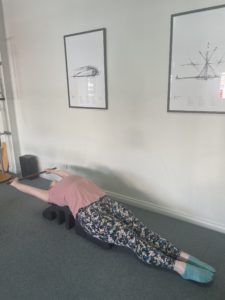 Side overs – what a beautiful exercise for lateral torso strength and stability! I love this exercise as it is a great way to challenge oblique strength and prepare the body for the more advanced version on the high barrel.
Side overs – what a beautiful exercise for lateral torso strength and stability! I love this exercise as it is a great way to challenge oblique strength and prepare the body for the more advanced version on the high barrel.
 [post_title] => A word from our new team member Nicola Kuiper
[post_excerpt] =>
[post_status] => publish
[comment_status] => closed
[ping_status] => closed
[post_password] =>
[post_name] => a-word-from-our-new-team-member-nicola-kuiper
[to_ping] =>
[pinged] =>
[post_modified] => 2022-10-05 10:04:41
[post_modified_gmt] => 2022-10-05 00:04:41
[post_content_filtered] =>
[post_parent] => 0
[guid] => https://www.infinitypilates.com/?p=4492
[menu_order] => 0
[post_type] => post
[post_mime_type] =>
[comment_count] => 0
[filter] => raw
)
[7] => WP_Post Object
(
[ID] => 4457
[post_author] => 5
[post_date] => 2022-06-16 14:21:09
[post_date_gmt] => 2022-06-16 04:21:09
[post_content] =>
[post_title] => A word from our new team member Nicola Kuiper
[post_excerpt] =>
[post_status] => publish
[comment_status] => closed
[ping_status] => closed
[post_password] =>
[post_name] => a-word-from-our-new-team-member-nicola-kuiper
[to_ping] =>
[pinged] =>
[post_modified] => 2022-10-05 10:04:41
[post_modified_gmt] => 2022-10-05 00:04:41
[post_content_filtered] =>
[post_parent] => 0
[guid] => https://www.infinitypilates.com/?p=4492
[menu_order] => 0
[post_type] => post
[post_mime_type] =>
[comment_count] => 0
[filter] => raw
)
[7] => WP_Post Object
(
[ID] => 4457
[post_author] => 5
[post_date] => 2022-06-16 14:21:09
[post_date_gmt] => 2022-06-16 04:21:09
[post_content] => 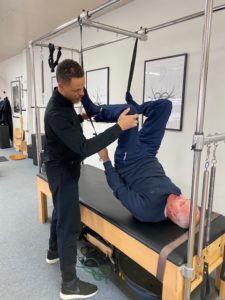 Paul guiding Peter on Wunda Straps[/caption]
To incorporate the use of breath, imagination and innovation through motion, we begin reshape our mind and bodies. This offers us a pathway away from pain. Without this change in behavior we won’t transform. We can’t transfer what we explore in the studio out into our daily lives. It is an ‘Art’.
Take it from a couple of our clients:
"Pilates is calming as well as strengthening, a resource for mental as well as physical health”. Ben 52
“I can focus on specific strengthening needs to enhance my swimming and running...and sitting at a desk”. Robbie 52
It is also why Peter can find muscles and movements he never knew existed in order to age gracefully and find new pathways for longevity.
This is the Art of Transformational change.
[post_title] => Men, Pilates and the Art of Transformational Change
[post_excerpt] =>
[post_status] => publish
[comment_status] => closed
[ping_status] => closed
[post_password] =>
[post_name] => men-pilates-and-the-art-of-transformational-change
[to_ping] =>
[pinged] =>
[post_modified] => 2022-06-16 14:25:48
[post_modified_gmt] => 2022-06-16 04:25:48
[post_content_filtered] =>
[post_parent] => 0
[guid] => https://www.infinitypilates.com/?p=4457
[menu_order] => 0
[post_type] => post
[post_mime_type] =>
[comment_count] => 0
[filter] => raw
)
[8] => WP_Post Object
(
[ID] => 4338
[post_author] => 12
[post_date] => 2021-10-07 17:53:27
[post_date_gmt] => 2021-10-07 07:53:27
[post_content] => After feeling inspired by a recent Pilates Alliance conference workshop attended by Infinity staff, this great piece of Pilates equipment is not only fun and challenging, but it also provides an added dimension to your home workouts!
The Pilates Bean Bag device is a rather simple piece of equipment that not only improves grip, shoulder and hand strength, it also assists with shoulder stabilisation and postural control. And the added bonus is it’s cheap and easy to make yourself! As you can also utilise click and collect from a local hardware store, this is a fantastic lockdown project for you to enjoy! Here, Paul will guide you through his step by step process.
You will need:
Paul guiding Peter on Wunda Straps[/caption]
To incorporate the use of breath, imagination and innovation through motion, we begin reshape our mind and bodies. This offers us a pathway away from pain. Without this change in behavior we won’t transform. We can’t transfer what we explore in the studio out into our daily lives. It is an ‘Art’.
Take it from a couple of our clients:
"Pilates is calming as well as strengthening, a resource for mental as well as physical health”. Ben 52
“I can focus on specific strengthening needs to enhance my swimming and running...and sitting at a desk”. Robbie 52
It is also why Peter can find muscles and movements he never knew existed in order to age gracefully and find new pathways for longevity.
This is the Art of Transformational change.
[post_title] => Men, Pilates and the Art of Transformational Change
[post_excerpt] =>
[post_status] => publish
[comment_status] => closed
[ping_status] => closed
[post_password] =>
[post_name] => men-pilates-and-the-art-of-transformational-change
[to_ping] =>
[pinged] =>
[post_modified] => 2022-06-16 14:25:48
[post_modified_gmt] => 2022-06-16 04:25:48
[post_content_filtered] =>
[post_parent] => 0
[guid] => https://www.infinitypilates.com/?p=4457
[menu_order] => 0
[post_type] => post
[post_mime_type] =>
[comment_count] => 0
[filter] => raw
)
[8] => WP_Post Object
(
[ID] => 4338
[post_author] => 12
[post_date] => 2021-10-07 17:53:27
[post_date_gmt] => 2021-10-07 07:53:27
[post_content] => After feeling inspired by a recent Pilates Alliance conference workshop attended by Infinity staff, this great piece of Pilates equipment is not only fun and challenging, but it also provides an added dimension to your home workouts!
The Pilates Bean Bag device is a rather simple piece of equipment that not only improves grip, shoulder and hand strength, it also assists with shoulder stabilisation and postural control. And the added bonus is it’s cheap and easy to make yourself! As you can also utilise click and collect from a local hardware store, this is a fantastic lockdown project for you to enjoy! Here, Paul will guide you through his step by step process.
You will need: